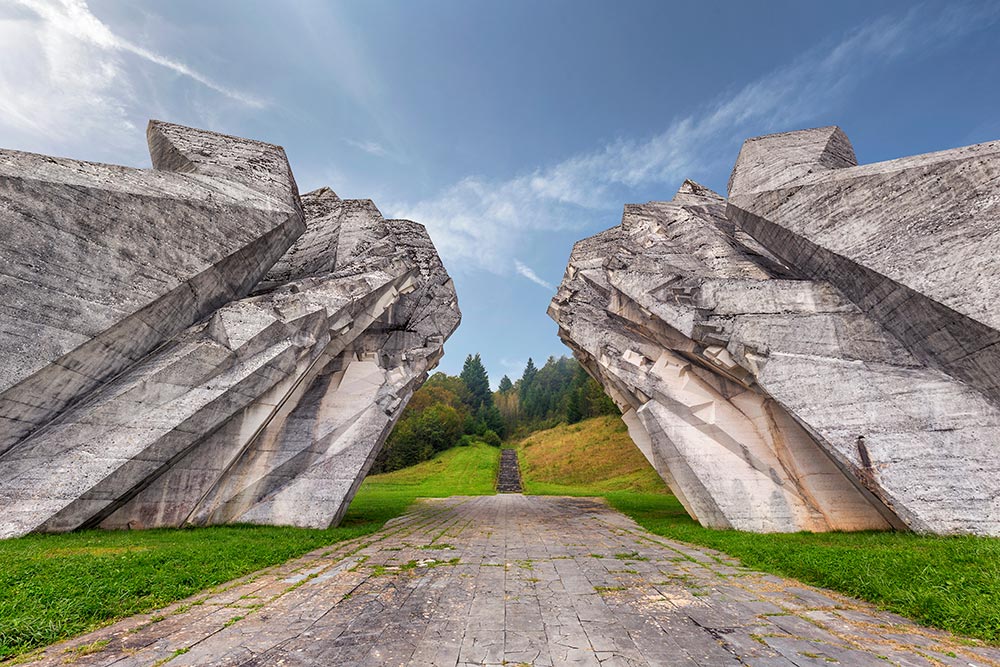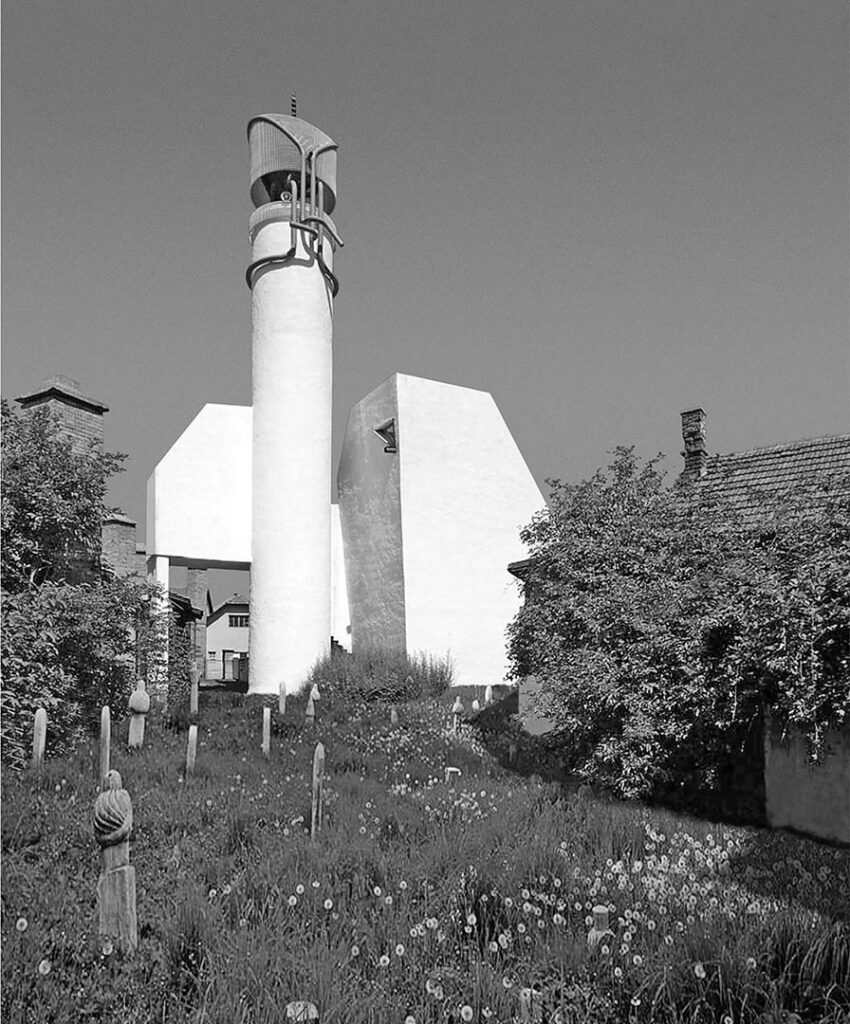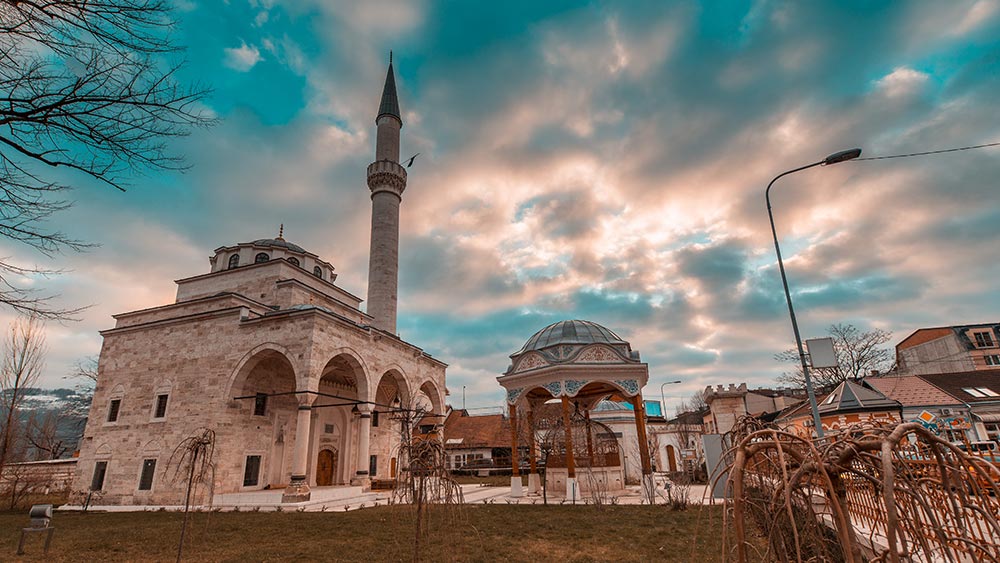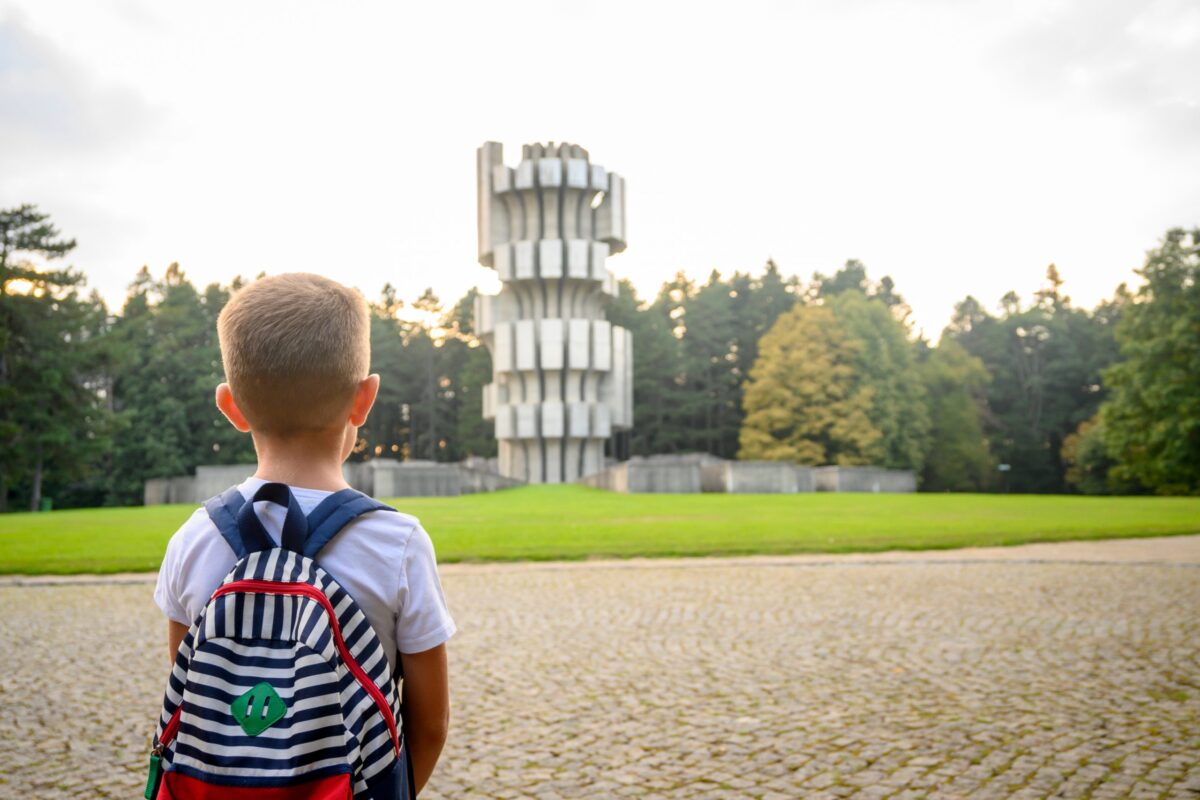- Home
- Destinations
- Balkan Activities
- THE BALKANS (Tours & Holidays)
- CROATIA SAILING 2024
- BALKAN STUDY TOURS
- Popular Tours & Holidays
- Transfer Tours via Balkans
- Death of Yugoslavia
- Brutalist Architecture
- Hiking & Trekking
- Food & Culinary Experiences
- Traditional Arts & Craft Workshops
- Rural Escape Tours & Holidays
- Wine Experiences
- Winter Tours & Holidays
- Private Transfers
- Private Villa All Inclusive Holidays
- Canoe, Kayak & Rafting
- Boat – Yachting Holidays
- Tailor-Made
- Inspiration
- Contact




 On arrival at Sarajevo International Airport, a private transfer is arranged, followed by the hotel check-in. An afternoon walking tour of Sarajevo’s old town and city center will be conducted, followed by a traditional Bosnian dinner and itinerary briefing.
On arrival at Sarajevo International Airport, a private transfer is arranged, followed by the hotel check-in. An afternoon walking tour of Sarajevo’s old town and city center will be conducted, followed by a traditional Bosnian dinner and itinerary briefing. On this day, we shall start early in the morning and aim to visit some of the most critical places in Sarajevo from the Yugoslavian period, focusing on brutalist buildings.
On this day, we shall start early in the morning and aim to visit some of the most critical places in Sarajevo from the Yugoslavian period, focusing on brutalist buildings. Additionally, on this day, the story of Yugoslavia can’t be investigated adequately without understanding the reasons behind the fall of Yugoslavia, the Siege of Sarajevo, and the positive consequences of the 1984 Winter Olympic Games in Sarajevo.
Additionally, on this day, the story of Yugoslavia can’t be investigated adequately without understanding the reasons behind the fall of Yugoslavia, the Siege of Sarajevo, and the positive consequences of the 1984 Winter Olympic Games in Sarajevo. The following day is reserved for explorations of socialist Yugoslavian architectural heritage in Herzegovina.
The following day is reserved for explorations of socialist Yugoslavian architectural heritage in Herzegovina. The Partisan Cemetery of Cenotaphs (symbolic graves), a masterwork of renowned Yugoslavian architect Bogdan Bogdanovic, finished in 1965, as a memorial to the partisan victims of WW2 in Mostar, beautifully displays all features of complex architectural, aesthetic, and landscape design. Being a unique monument of the urban scale of the city of Mostar, with great ambient value, this cemetery serves as a monument of Yugoslav solidarity.
The Partisan Cemetery of Cenotaphs (symbolic graves), a masterwork of renowned Yugoslavian architect Bogdan Bogdanovic, finished in 1965, as a memorial to the partisan victims of WW2 in Mostar, beautifully displays all features of complex architectural, aesthetic, and landscape design. Being a unique monument of the urban scale of the city of Mostar, with great ambient value, this cemetery serves as a monument of Yugoslav solidarity. Probably the most famous Yugoslavian memorial architecture in Bosnia and Herzegovina is the Memorial complex for the battle of Sutjeska.
Probably the most famous Yugoslavian memorial architecture in Bosnia and Herzegovina is the Memorial complex for the battle of Sutjeska. The day’s first stop is visiting Visoko and its pearl of modernist architecture, Sherefudin’s White Mosque.
The day’s first stop is visiting Visoko and its pearl of modernist architecture, Sherefudin’s White Mosque. After exploring the architectural wonders of Visoko, we continue our journey to Zenica – probably the most critical “massif” of Yugoslavian modernist architecture.
After exploring the architectural wonders of Visoko, we continue our journey to Zenica – probably the most critical “massif” of Yugoslavian modernist architecture.
 Our walking tour of Zenica will cover the most important buildings of the Yugoslav socialist era. Additionally, we will focus primarily on Juraj Neidhardt and his pioneering work on the development of an authentic Bosnian style of architecture. This style successfully synthesized traditional and modern elements within his objects’ aesthetic and functional design.
Our walking tour of Zenica will cover the most important buildings of the Yugoslav socialist era. Additionally, we will focus primarily on Juraj Neidhardt and his pioneering work on the development of an authentic Bosnian style of architecture. This style successfully synthesized traditional and modern elements within his objects’ aesthetic and functional design. The morning walking tour of Banja Luka will focus on the heritage of this city, starting from the medieval days to the Ottoman and Austria-Hungarian periods, the Yugoslavian era, and present-day Bosnia and Herzegovina. Locations like Kastel Fort, Ferhadija mosque, and church of the Christ the Saviour are must-see the heritage of the past times in Banja Luka.
The morning walking tour of Banja Luka will focus on the heritage of this city, starting from the medieval days to the Ottoman and Austria-Hungarian periods, the Yugoslavian era, and present-day Bosnia and Herzegovina. Locations like Kastel Fort, Ferhadija mosque, and church of the Christ the Saviour are must-see the heritage of the past times in Banja Luka. After lunch and free time in Banjaluka, we shall visit the most famous Yugoslavian memorials in this region of Bosnia and Herzegovina – Monument to the Revolution at Mrakovica at Kozara National Park.
After lunch and free time in Banjaluka, we shall visit the most famous Yugoslavian memorials in this region of Bosnia and Herzegovina – Monument to the Revolution at Mrakovica at Kozara National Park.




